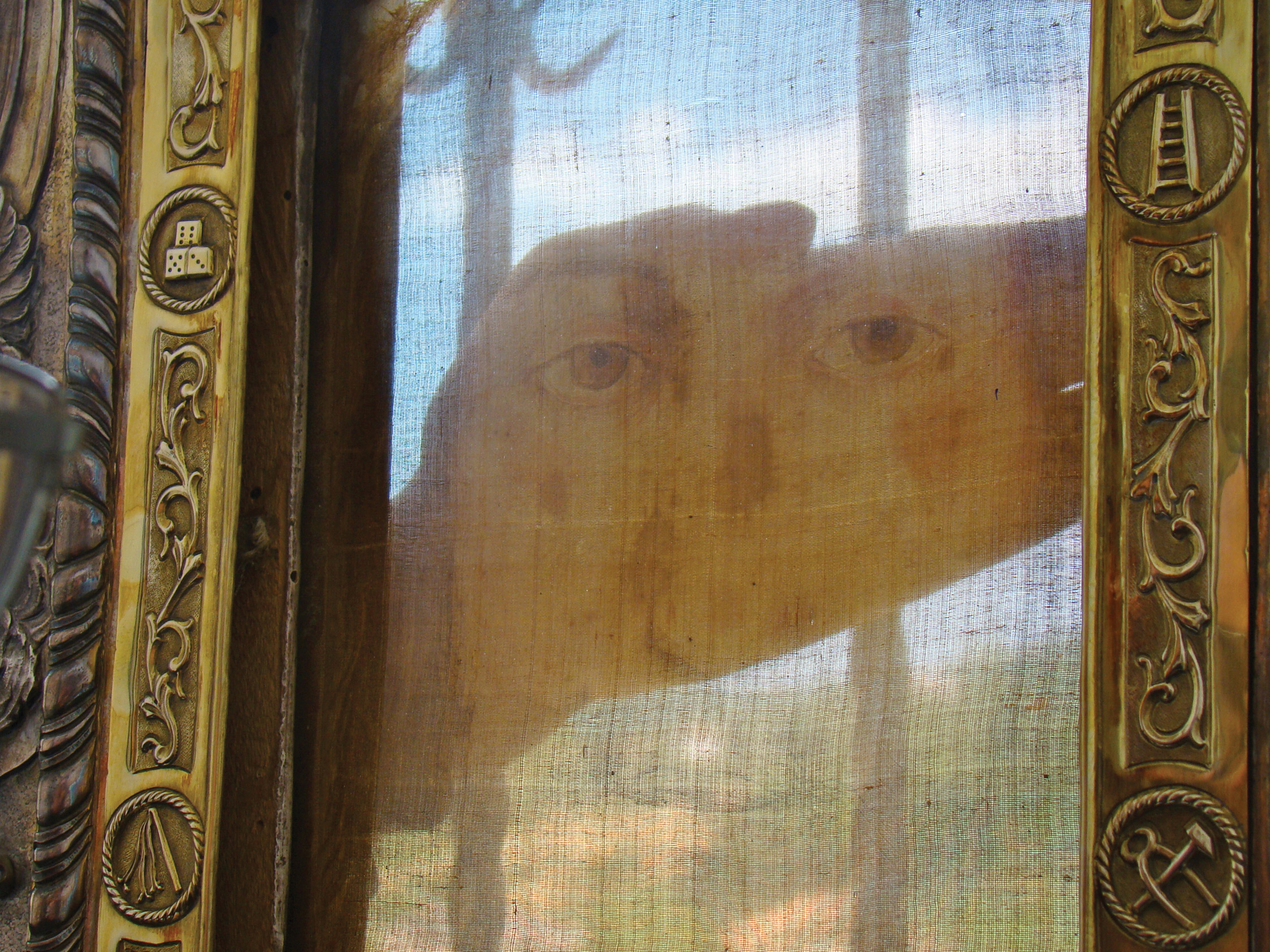
The Veil of Manoppello.
Welcome to Manoppello.
Rabbi Gabriel Hagaï: Thank you, Paul.
You are Gabriel Hagaï, a Rabbi from Paris. Could you tell us a little bit more about your life?
Well, I was born in Paris, but lived most of my life in Jerusalem, more than 20 years. I married there and all of my children were born in Jerusalem. I lived for a few years in Boston, where I was a Rabbi and also was involved in social work with homeless people and used to run a soup kitchen. After that, I came to France. I arrived in Paris in 2003 and since then, I work as a researcher at the university.
You’re an Orthodox Rabbi?
I’m a Sephardic Rabbi, meaning I come from a tradition that was mainly kept alive in Muslim countries and I studied all my Rabbinical studies in Jerusalem.
But what is an Orthodox Rabbi like you doing in a little remote place in Italy like this?
It’s a long story. To make it short, I was approached by a friend who told me that there’s a woman in Sardinia who’s the last person that knows how to make a Byssus fabric from threads of mussels from the sea. And I was very interested because Byssus is a part of the garments that were the Priests’ garments in the Temple in Jerusalem. So we travelled to Sardinia to meet this woman who told us that there’s a veil in Manoppello completely made of Byssus. That’s why we came here to look at the veil which seems kind of a bridge between Judaism and Christianity. I think it’s important.
Christianity and Judaism have a long story together. Especially Christianity has Jewish roots. And we live in a wonderful period when we are able to dialogue, to connect and to recognize and to enrich oneself with the other’s tradition.
But what made you interested in Byssus? I cannot imagine, let’s say, a Catholic priest who is interested in Hasidic garments of medieval times…
Well, I’m a historian, specialized in medieval manuscripts, especially in Hebrew, Aramaic or Arabic. So everything that has roots in history and comes from a long tradition, I’m very interested in. Especially Byssus and all the traditions that surround Byssus. It comes from a very, very ancient history. Egyptians used Byssus, the Phoenicians used Byssus, the Hebrews used Byssus, it was also used in the Roman and the Greek culture. So I mean, for me, it’s a wonderful opportunity to get a touch of history. It’s living history, it’s a monument.
I’ve heard that the “ephod” from the high priest’s garment was made of Byssus, and even the curtain in the temple was made of Byssus, although I cannot imagine it. I mean, it was huge temple, with a huge curtain, so I cannot imagine. What I know about Byssus is that you can have maybe a little piece like this made of Byssus…
Actually I have to tell you you’re right and wrong at the same time. Byssus is one of the threads that enter into the composition of the priests’ garments and the veil in the temple. There are other threads that are dyed with other colors. Usually they’re made of wool, of fine wool, wool of a virgin lamb, of course. And so, it’s one of the threads that gives a kind of a golden hue to it when the sun hits the garments. Then there’s the gold that comes out. There’s a real gold thread and there’s also a Byssus thread within the garments.
Here I’ve got a little piece of Byssus. You said you studied it? But when did you first get the first piece of Byssus you could hold in your hand to look upon?
The first I had in my hand was in Sardinia. But the first I looked upon was in the Louvre, in the Louvre Museum in Paris, where there were some pieces from the Egyptian time and it’s very fine Byssus. It’s about the same color. And usually it’s wrongly translated because it’s translated or explained as “fine linen.” But fine linen doesn’t exist, because there’s only one kind of linen. And it comes from a very ancient mistake. Byssus, or “Bussos” in Greek, was also mistranslated because people didn’t know the actual fact. And “fine linen” is a way to call sea silk or “Byssus.” But there’s only one type of linen. Anyway, it’s interesting that Egyptian specialists, Egyptologists, wrongly translated it because in Egyptian, Byssus is called “shesh,” and “shesh” was wrongly translated as fine linen. It’s mentioned in the Rosetta Stone.
It’s in the Rosetta Stone?
Yeah, you can find the word in the Rosetta Stone.
Yes, I realized also that it’s often translated in English as “shining linen.” They didn’t know the material anymore, so they just figured out what it might be. It had disappeared from the collective consciousness.
Exactly, and because translators were coming from Western Europe they didn’t have contact with the reality of the Mediterranean area.
It’s a problem with wording. If you don’t know the reality anymore, then you start to create words.
It’s all over Biblical translations. It’s not only Byssus. You have maybe a hundred terms that were wrongly translated.

Italian Father Carmine Cucinelli, OFM Cap, who is the custodian of the veil and the shrine, with Alan Holdren of EWTN, a distinguished American photographer.
For Christians, Gabriel [Note: the first name of the Rabbi is Gabriel] is the archangel who announced the Messiah to the Virgin Mary. What is Gabriel for you? Who is Gabriel for you?
For Judaism, Gabriel is one of the angels that came to visit Abraham after his circumcision and he’s the angel that announced Abraham that he will have descendants. He will have a son, Itzhak, Isaac. And he is also the angel — because Gabriel means the strength, the power of God, the virile power of God — he’s also the angel who went to Sodom and Gomorrah to do God’s work there and destroy the cities. Anyway so it’s an angel who announced things and also can be very martial-like. And in the equivalency between Roman deities and angels, it corresponds to Mars. Mars is the God of war.
But he is the annunciation angel to Abraham and to Virgin Mary. What do you feel closest to? The martial angel or do you…
I feel closer to both. (Laughs) I have a very strong, very sanguine nature. I get angry very quickly, so that’s very martial like.
You get angry very quickly?
Yeah, I do.
Please, not tonight. Look, Gabriel, we are created in the image of God. Christians believe furthermore that God became man and acquired a face in Jesus of Nazareth. Whom and what did you see here today? You came here to see a piece of Byssus but now you saw this veil, yesterday and today. What did you see in him? Or whom did you see?
Well, I saw the image of someone called Jesus, and for me Jesus is a Rabbi. He’s a colleague. And he’s a Jew. I saw the face of a Jew. And you know, I don’t ask myself many questions, how did this image came to this veil and so forth. You know, I’m a very simple person. If there’s a popular devotion to it and it brings happiness and it can elevate the consciousness of people who believe in this image, I say “Okay, this image is useful, is helpful to humankind.” So I accept the usefulness of this image.
You know, as a Jew, we may look at Christianity as a heresy. For us, Christianity is a heresy of Judaism. But personally I think, it’s also right and it’s also wrong because Christianity, Christianism, exists by itself, and because of the length of its existence in history, of course there’s the providence; this is God’s will. This is God’s providence. Christianity creates saints and creates many good things. So even if I don’t understand why there’s a need of a trinity, why there’s a need of a man becoming God as a God becoming man, I don’t try to understand. I accept the big boss knows things better than we do. So I have my own religion; I have my own tradition. Christianity says many things that I cannot hear. For us, it’s impossible to hear God – like the only son of God. Okay, but this really is a part of things that for a Jew it may be a heresy to believe. But still, it’s God’s will and since there’s God’s providence in it and it brings an elevation of consciousness to human beings, I say “Okay, I accept it.”
So you have no problem, first to identify him as the Jesus of Nazareth, whom you see here, and second, you don’t see him here as a heretic?
No, no. Not at all, you know. I’m here. I accept things as they are.
Some weeks ago, I was here with a friend. She is an Argentinean writer. We came here, she had not heard of the Holy Face before, and then she was very impressed by the image. Then we drove back to Rome. The next day, she sent me an e-mail and told me “Look, Paul. I woke up this morning and the word ‘Shekhinah’ was on my lips and in my mouth. I didn’t know what it is. I don’t know what it is.” I said “Shekhinah? Shekhinah? Have you looked at the internet? Have a look at Google where you’ll find out what it is.” How do you relate to this?
Well, Shekinah is the presence of God, God’s presence. And of course, first of all it has a feminine attribute and it’s something – it’s a manifestation of God within creation. First, it’s very important. We say that humankind is symbolized by Shekhinah. When humankind is in exile, Israel is in exile, the Shekhinah is in exile. And it’s a way of… when humankind elevates toward the Godhead, it’s the first thing you can encounter. That’s Shekhinah. It’s God’s presence. After that, you may encounter many other things on a mystical level. But Shekhinah is really like the real thing we can perceive here as a human being in a dualistic world. So Shekhinah is God’s presence.
So if she dreamt about Shekhinah, it means that in her consciousness or something like that, there’s a message of God, and I say “Okay, there’s some presence, some Godly presence here.” Because, you know, I’m a believer. I believe God is everywhere. So as I told you, if anything can elevate the consciousness of human beings, of course there’s God’s presence here.
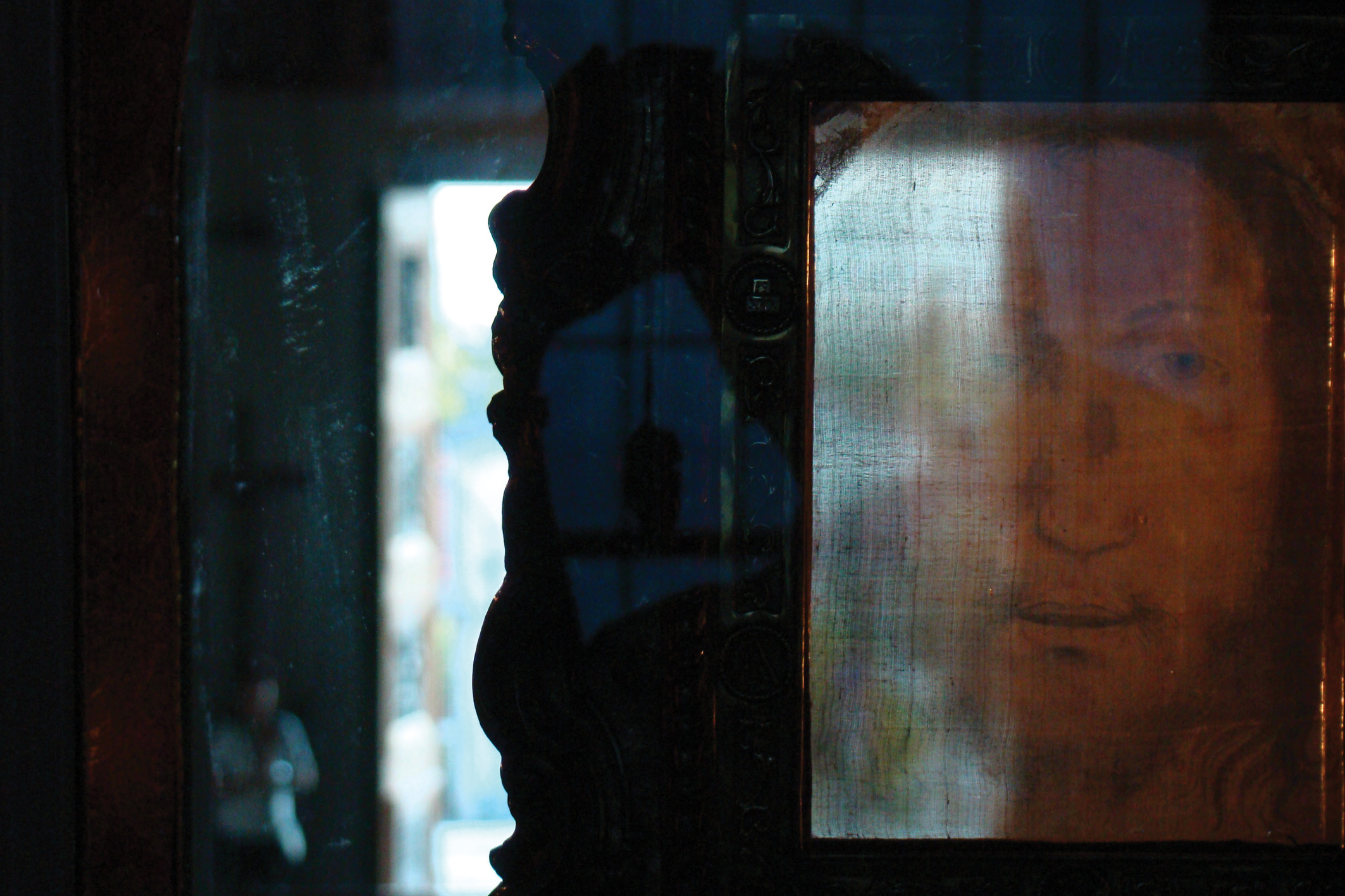
The Veil of Manoppello.
Yesterday in Rome, you told me — if you want to retell it — that you once had a dream years ago that Jesus appeared to you. Could you tell me a little bit what he looked like and how he was dressed? What did he tell you?
I won’t tell you what Jesus told me but I’ll tell you that Jesus was dressed in white. He was all in white in kind of an ancient, like Roman, like a big “tallit,” a big and a white tallit. His face was a very beautiful face. I don’t recall the face very well, but it may have been this face because when I kind of look at the Manoppello image and I kind of press my eyes, it looks like what I saw in my dreams. Actually I dreamt of him another time…
This morning, I saw you march into the Church, right behind the Volto Santo, the Holy Face. It had been brought down from the altar and then put down there on display. And you were the one in front of all the priests, in front of all the pilgrims, you were the one marching behind the Volto Santo into the Church –
Well, because we stay here with the Capuchin brothers. And for the sake of interfaith dialogue and interfaith encounter, they said to me, “As a Rabbi, you’re invited to walk behind like us.” So I said “Yes, it’s a good gesture of openness. We have to communicate on many levels.” And so, yes, I walked. And my dream last night was exactly like I was going down those stairs that look like the ones in the Church and Jesus was opening a door and saying “Quick, quick, Gabriel. There’s the procession going.” In my dream, I said “What?” I said “Okay, I’m obeying, but what procession?” And, you know, in my dream, it wasn’t clear. I didn’t know what this prophet was talking about. Anyway but during this morning, I said “Oh, this is it. This is what I felt in my dreams, you know, kind of premonition like.” So it was – yeah, it’s moving to have dreams like that.
All right. And you realized, really, it’s him again in your dream?
Yes, because in dreams, you don’t. . . people you encounter in dreams don’t have to introduce themselves. You know who they are. When you see an angel in a dream, you know which angel is talking to you, or a saint or anyone.
But can you recall – what did He say? He said “Come down” or “Follow me”? Or what did He say?
“Come down quick.” “Come down quick.” And “The procession is starting.”
That’s what you did?
Yes.
In Budapest, in Hungary, in the 19th century, there was a Rabbinic school of thinking that thought that the messiah at the end might look like Jesus of Nazareth. That it might be Him. Have you ever heard of it?
I have heard of it. When the messiah will come, he will come for everybody, especially for Jews, Christians and Muslims who believe a messiah is about to come, or come back. So if Christians say it’s Jesus maybe it will be kind of a Jesus-like messiah. I mean as a Jew, I don’t care. You know, Jesus, he was a Rabbi, so I mean, he’s a good messiah. Why not? You know, if he comes back, I’m okay. (Laughs)
But is there still a school of thinking which is considering that it might be Him?
Actually you know about mystics, it’s not important who is the messiah. It’s important that he’s coming. And when He’ll come –
Are you sure that it’s not a prophet?
Yeah, because Ashkenazic Jews will say the messiah will be an Ashkenazic Jew. And Sephardic Jews will say he’ll be Sephardic. But it’s stupid because when the messiah will come, he will come for everybody and he will come with prophets who will certify that he’s the messiah. And He will make peace with everybody — everyone will agree, because it will be like a kind of a miracle revealed. And, of course, if the messiah doesn’t come for Christians and Jews and Muslims alike, altogether, it’s not worth coming. (Laughs)
… then it won’t be him?
Of course it won’t be him. He comes for peace.
Yes. But what I heard and experienced here very often, is that people see this image, this veil, in some way as a mirror. I’ve seen Africans who saw an African here, Chinese who saw a Chinese here. So this Holy Veil has a messianic dimension, doesn’t it? The image here on the veil? I mean the mirror quality of it.
The people who come here to look at the veil, of course they look at the veil with the eyes of faith. And eyes of faith are doing things with an intention. And a spiritual intention, of course, will give fruits, like blessed fruits. And the mirror is like a fruit, a blessed fruit, a fruit that someone can receive. So, of course, you only see what you want to see or you may see what you’re expecting to see or you may see what you are open to, and then God makes you see things that work for you and help to elevate your consciousness.
I agree, but to a certain extent, I mean, there’s a difference between this image we have here and a masterpiece, let’s say of Leonardo da Vinci. I mean a painting of Leonardo da Vinci would be a masterpiece, but that wouldn’t have – how should I say – that mirror quality.
I understand. I hear you. And there’s an ethereal quality to the image here because it’s like on a kind of a transparent veil. It’s very thin. It’s very ethereal. It’s like smoke. It has a kind of out-of-worldly quality to it. So anyway, the technique that was used, I mean the technique on the veil, is very interesting because, of course, when you change position and according to light, the image is not the same. So it’s a changing image. So of course, maybe there’s a special way of communicating to consciousness when people come here and look at the veil with the eyes of faith, and something happens to them. Of course.
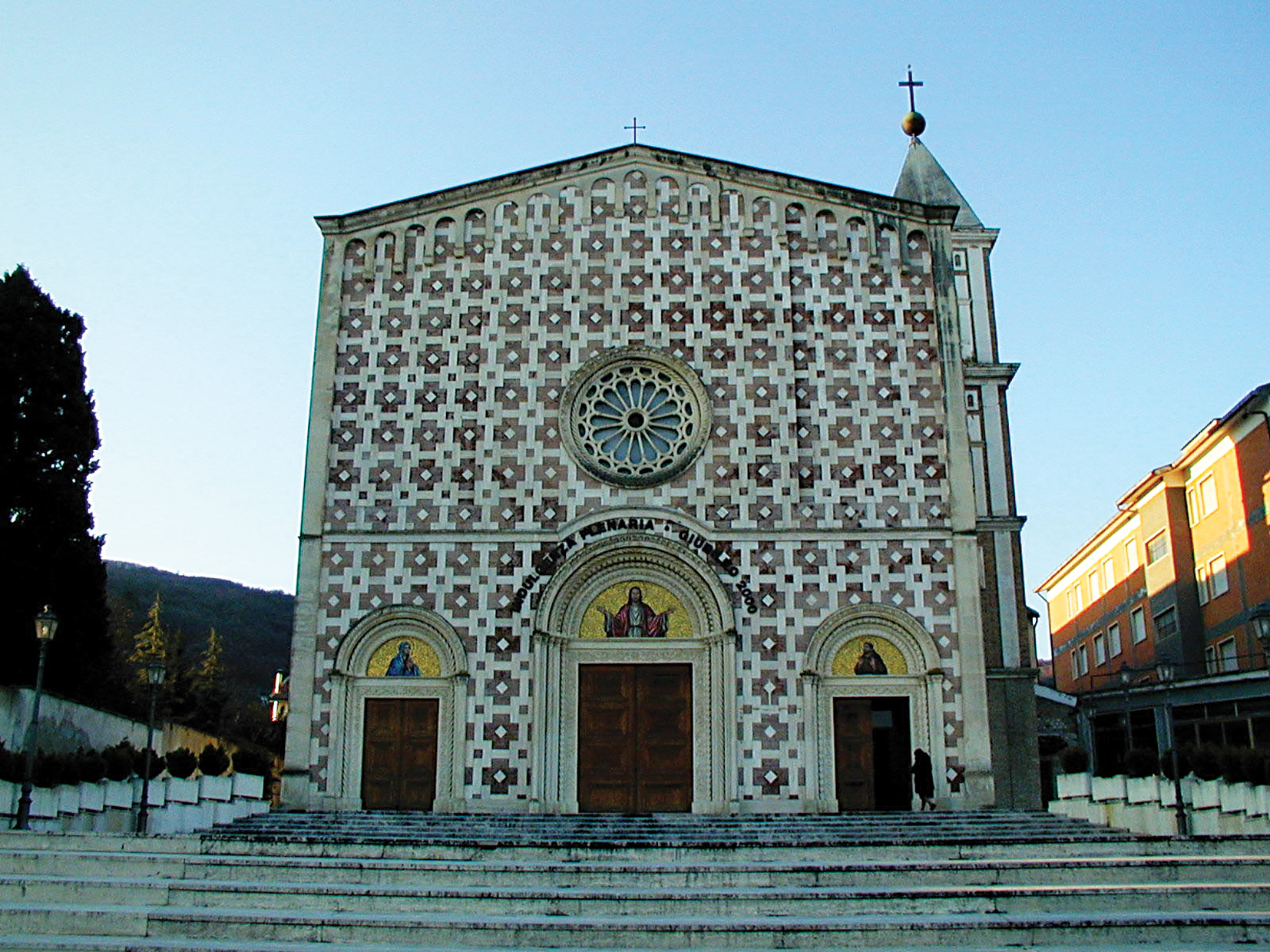
the facade of the church where the veil with the face of Christ has been kept for 400 years.
But you realize we don’t find any trace of color nor paint on this veil. For this material, it is technically impossible. I mean you cannot paint upon it. So it remains completely inexplicable how this image came onto or into that veil.
Yes, yes, yes. You know, in every miracle, often there’s an opening to skepticism. Otherwise, we as human beings, we wouldn’t be able to remain free in our will. God gave us free will. So even if there’s a miracle, there’s always an opening to say: “Oh, I’m skeptical, and I may remain skeptical.”
So you don’t hesitate to see a miraculous dimension in this image…
No. You know I believe in miracles and I believe miracles transcend religions. Miracles are made for humankind. So every saint is not a saint of his religion. He’s a saint for all humankind and every miracle is a miracle for all human kind. So if it’s a miracle, it works for everybody.
Let’s talk about another great miracle. The Maharal of Prague —the famous Rabbi Loew who once created out of clay the Golem as a living figure to help the Jewish community in an hour of deepest need — he once said that if men would try to stretch their hand and fingers towards the tree of life the messiah would come. Now, we see not only men trying to stretch their fingers towards the tree of life, but an entire industry. Do you think that it’s time for the messiah to come, or to come back, as we say?
You know, I’ll tell you a story –
Please do so.
Because it’s not humankind that waits for the messiah. It’s the messiah who waits for humankind. Messiah is the raising of consciousness. When humanity attains a certain level, then the messiah reveals himself. There was a Rabbi and the Prophet Elijah used to come to him in a dream-like vision. So once he asked “Where is the messiah?” He said to him, “He’s in Rome, you know, at the doors of Rome, and you can look for him there.” So this Rabbi, in a mystical way, went to Rome and searched for the messiah and found the messiah among the lepers in the doorways of Rome, and asked “When are you coming?” And the messiah answered him “I’ll come today.” So when the next morning the messiah didn’t come, the Rabbi asked the Prophet Elijah, saying “This messiah is… he’s a joke. He makes jokes because he’s not serious. He said he will come today. Yesterday he told me that, and today he didn’t come. How come?” And the Prophet Elijah explained to him “No, he was quoting a verse: ‘Hayom im b’koli tishme’un’: ‘Today, if you listen to My voice,’ says God.” So of course, the coming of the messiah is linked to the listening to God’s voice, like the elevating our human consciousness to be more spiritual people. And we are in a time that spirituality is there. Every teaching of every spiritual tradition is in the open. Everybody, if he wants, can study every tradition, every spirituality from every tradition. And so it’s a sign of a kind of elevation, and there’s always a balance between good and evil, between right and wrong. So at the same time that humankind may be and is able to attain a very high level of consciousness, at the same time you have the opposite, when it goes down, it goes down very deep, and that’s the way we are here now. But if you look on a certain side like the glass is half empty, so you say “Oh, we are very low in humanity.” And if you look at the glass half full, you say “Oh, but we’ve never been this high in humanity.” They both are… they work together.
Another, perhaps a rather critical, question. There’s a high probability that this veil comes from — according St. John’s Gospel of the Resurrection of Christ — a grave, which means it was quite impure. Then it contains an image. Doesn’t it contradict your beliefs and opinions somehow? I mean, to get that close and for it to be such an object of veneration.
What’s forbidden to us is to make God’s image. So it’s totally okay to paint faces and there were Jewish painters and if you look at manuscripts, you find always little figures, human figures here and there. So I mean, it’s okay for us, first of all. Secondly, impurity like, death impurity, is only like the body itself. Things that were attached to the body are impure, but it’s not the same impurity. The body himself is called: Avi Avot Hatumah, meaning it’s the father of all impurities. But everything that touched it is impure. Yeah, indeed. But it’s not this veil – it doesn’t bring more impurity, so you know, it’s okay.
You know, we have a tradition that in the commandments God forbade to paint His face because He said “This I’m going to do myself. I’m going to paint my masterpiece. One day, I’ll paint my image.” Aren’t you afraid of your fellow Rabbis, I mean, that you came into such…
No, you know as Rabbis we’re free. We don’t have bosses and any structures that say you have to do this and have to do that. As a Rabbi, I studied for 14 years in Jerusalem and according to what I understand within the coherency of my tradition, I’m very free to act, and you know I may act like that.
Other Rabbis will disagree with me. Okay. But they will respect me because in Orthodoxy, there are many ways to Orthodoxy, many choices where you may choose one and the other may choose another. But there’s respect because we know that each of these choices were made within the coherency of the Rabbinical tradition. So there’s this side – there’s a place for my decision within the Rabbinical coherency, the Rabbinical tradition, and especially within the mystical tradition, because I’m also a mystic. I’m also someone who studied our mystical tradition. I was trained and initiated into our tradition, so we may be slightly more within the spirit of the letter than the literalists’ vision of things.
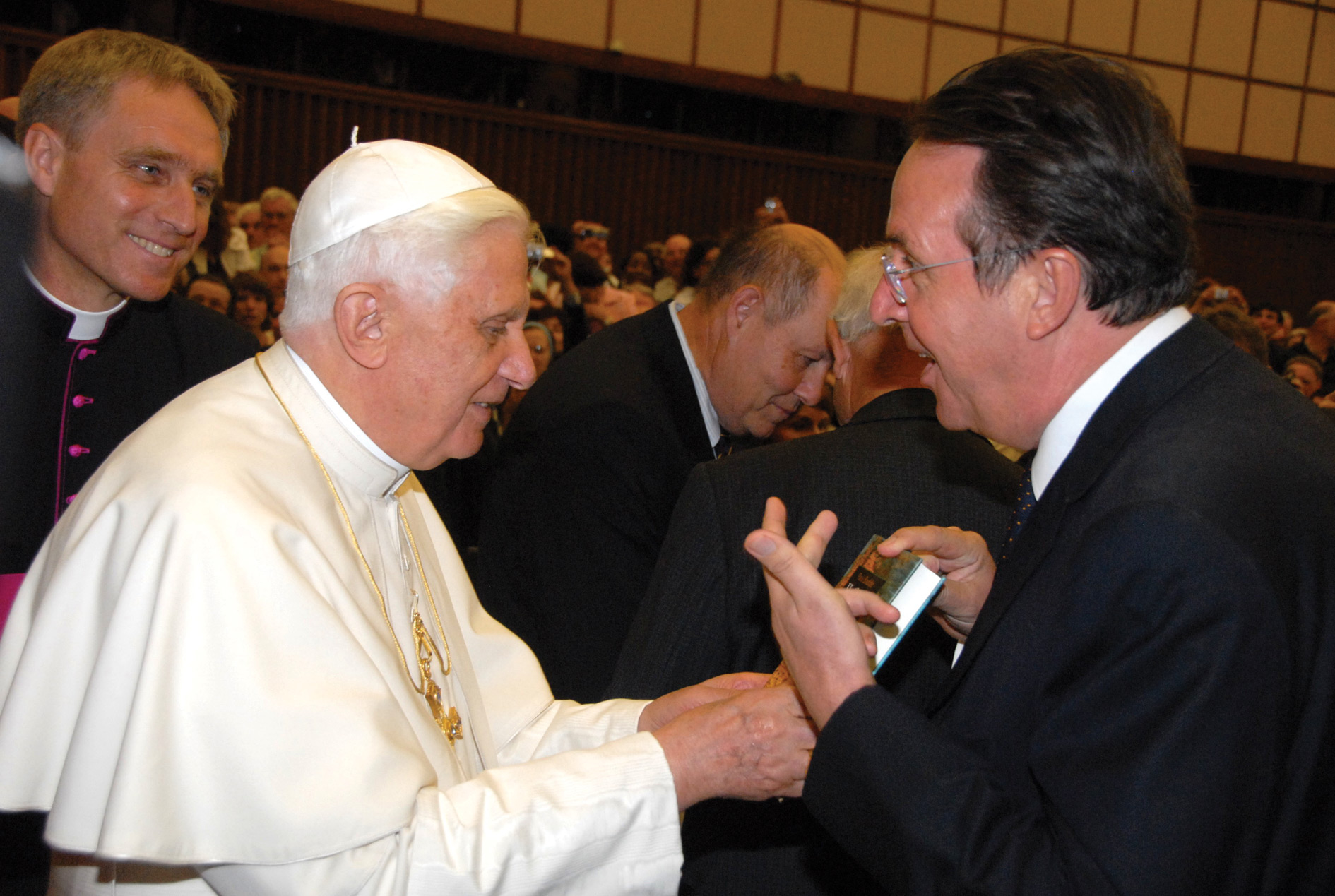
Pope Benedict XVI receives a book on the veil authored by Paul Badde.
All right, but I realize this came as a surprise to you, what you met here. So what’s your conclusion, I mean, after this encounter with this Holy Face from the heart of Christianity? How would you describe your conclusion?
You know, my conclusion is that what I think is not important. What’s important is the spirituality that is alive here because pilgrims come here with a lot of faith and this faith works on them. If among the millions of pilgrims there was one who was touched by grace and became a saint, I think it’s worth it. And I believe there is more than one in a million. Many, many Christians who come here, pilgrims, are touched by grace. They are transformed. Their consciousness is raised and they realize their Godly spark inside.
There’s this realization that this image is my image.
So this veil is inside me. I have, on my heart, this veil, this image is here. So I am – we’re all created in God’s image. So when this realization comes and you realize that “Oh, I’m not the only one of God’s image. All humankind is of God’s image. And there’s no me alone, there’s more me than me. You’re not less me than I am and I am not less you that you are.”
So when there’s this realization and there’s this huge love to humankind, because there’s this love of God, so when someone succeeds to this moment of grace, it’s worth it and I found it here.
Thank you so much, Rabbi Gabriel. Or as you may say, toda raba and Shabbat Shalom.
Toda raba!
What a beautiful Shabbat!
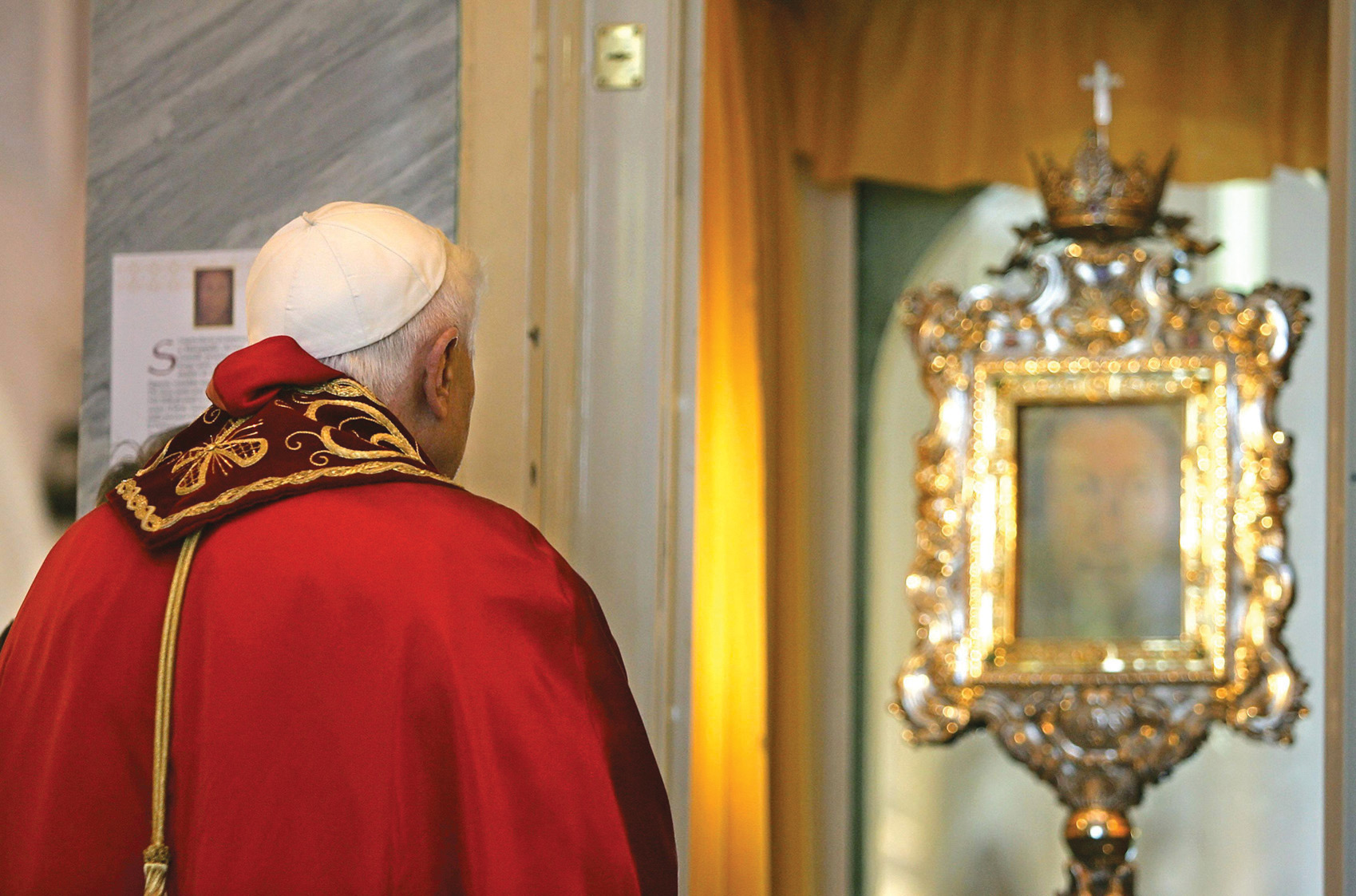
Pope Benedict prays before the veil in Manoppello, Italy, on September 1, 2006.

The German writer Paul Badde, author of this interview, looks closely at the sacred image of Manoppello.

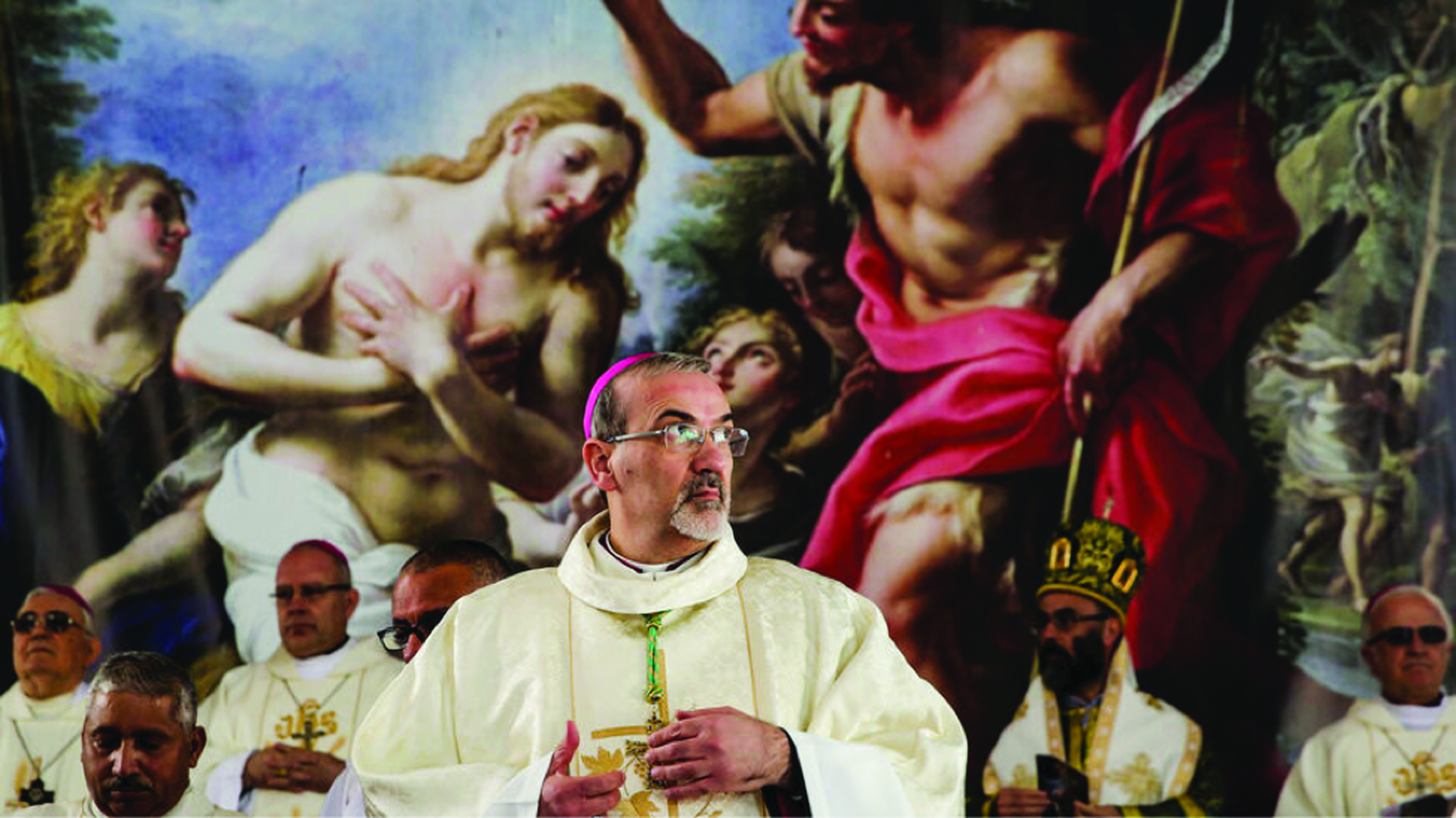
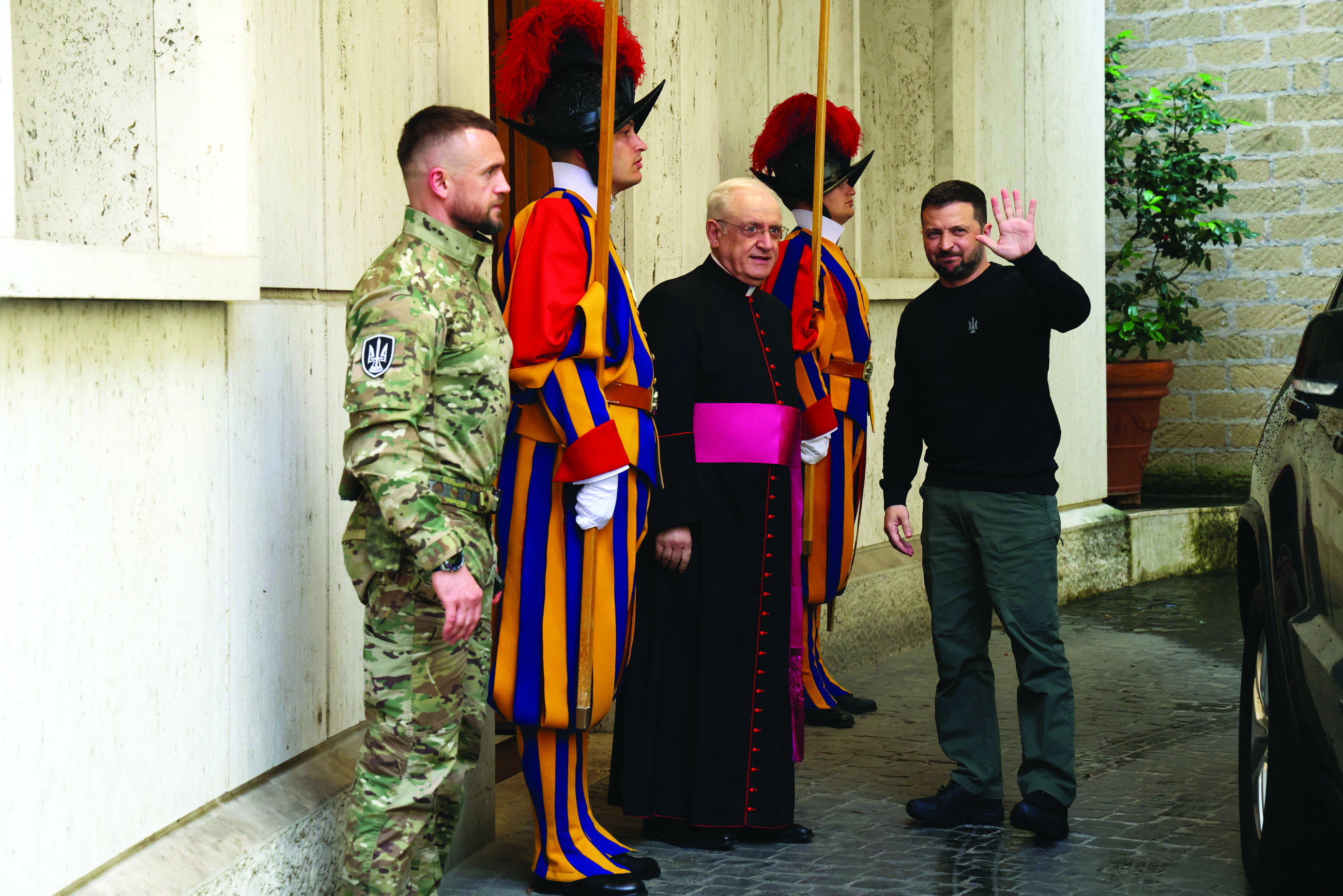
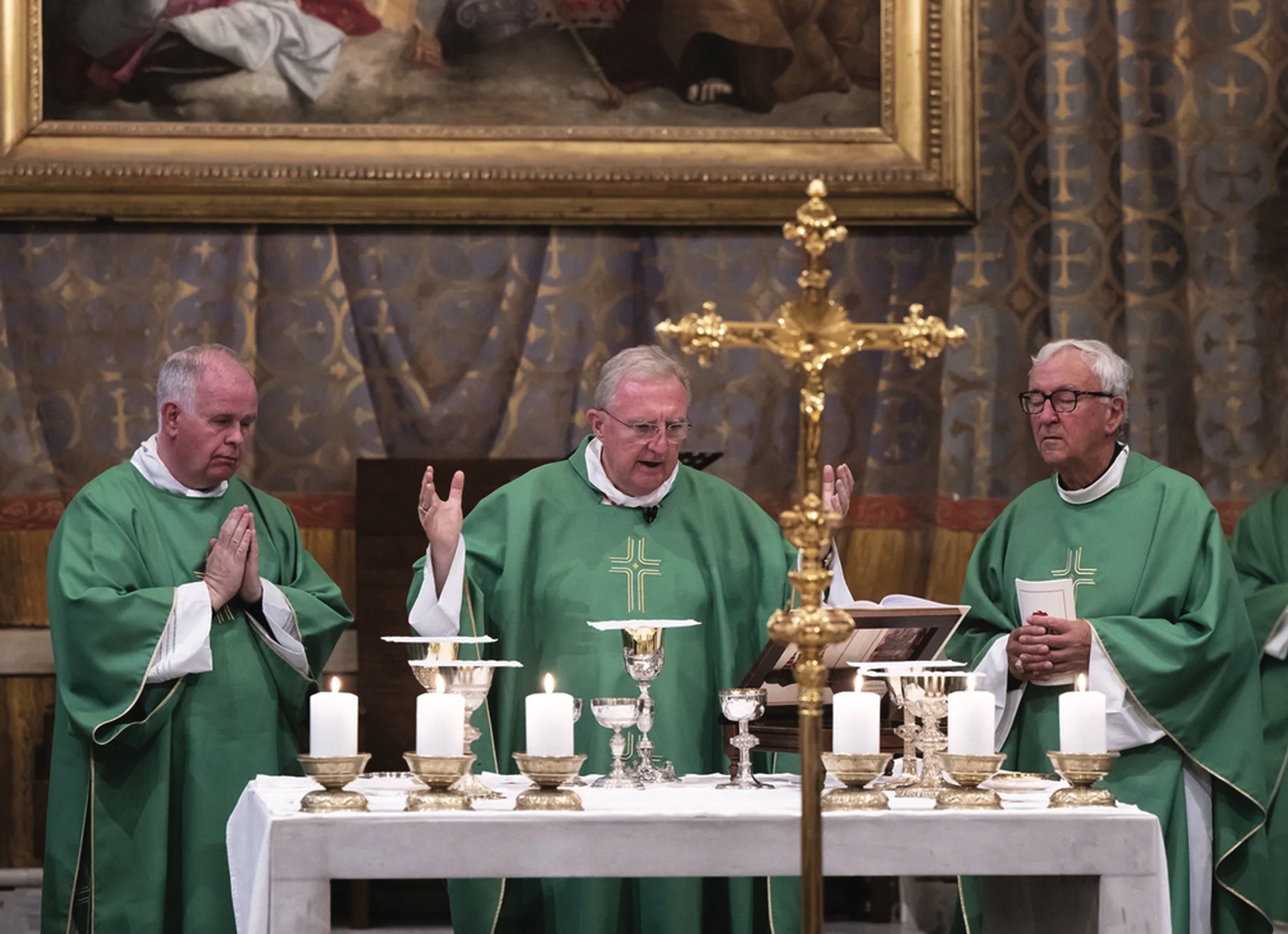
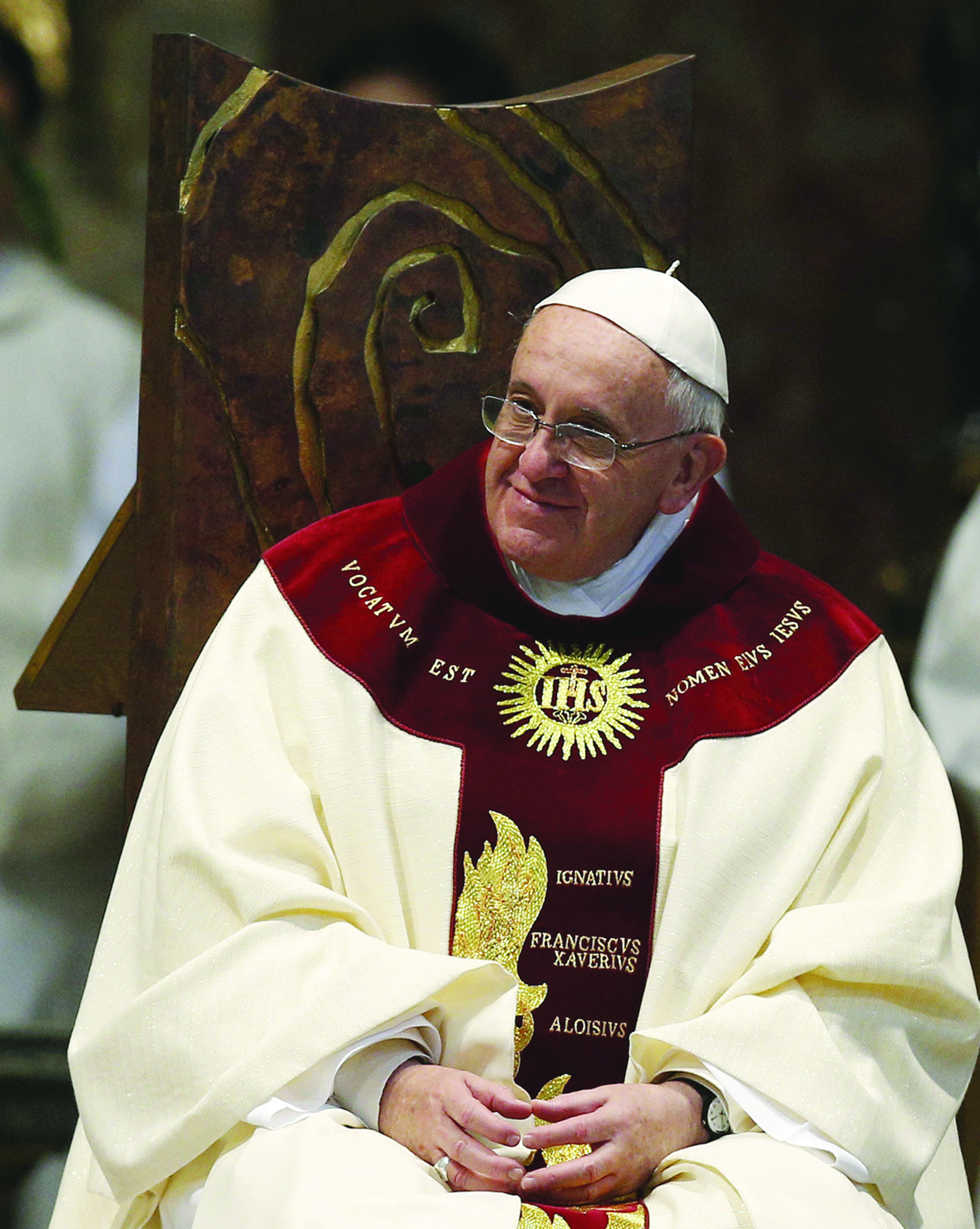
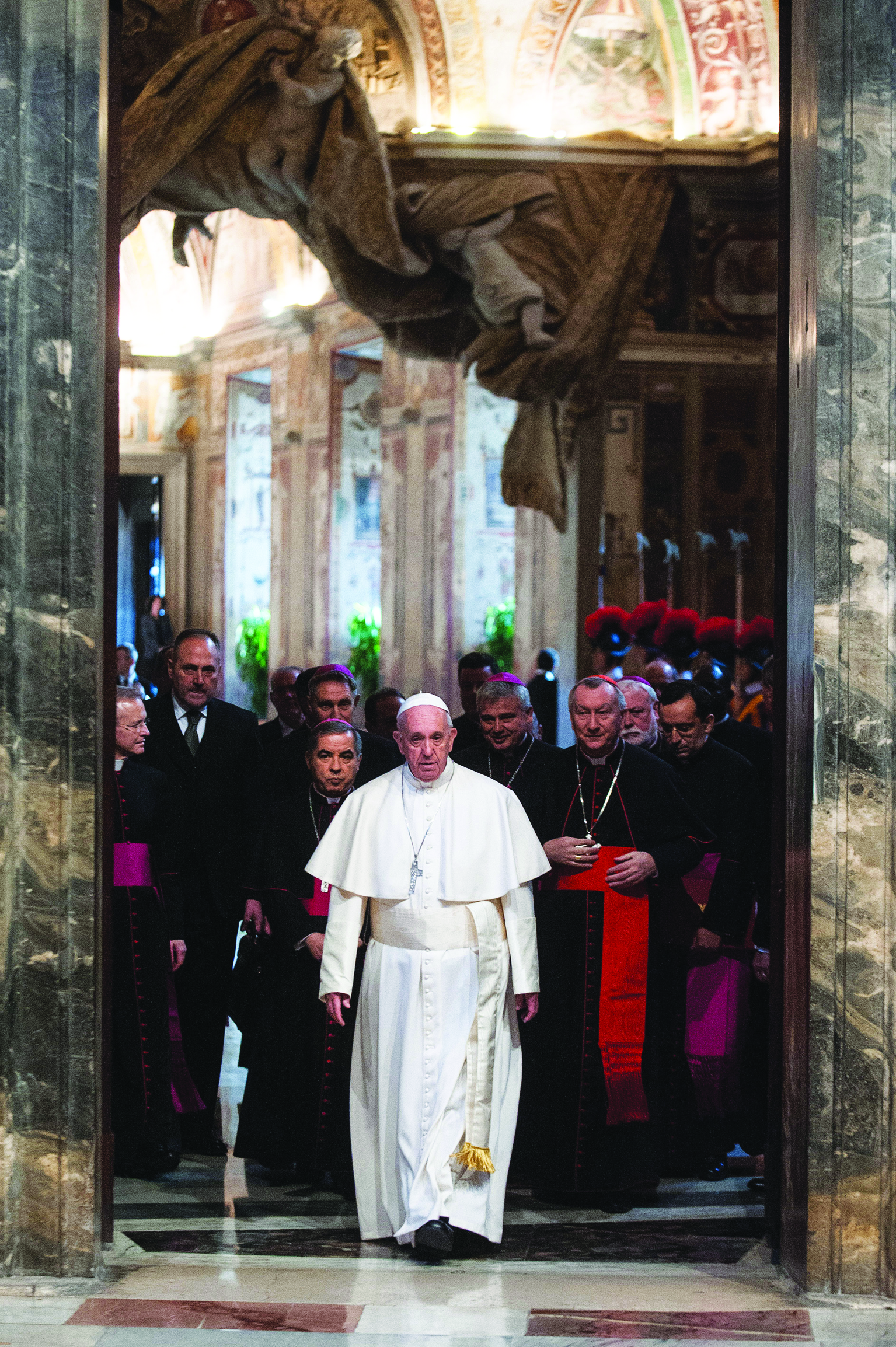
Facebook Comments